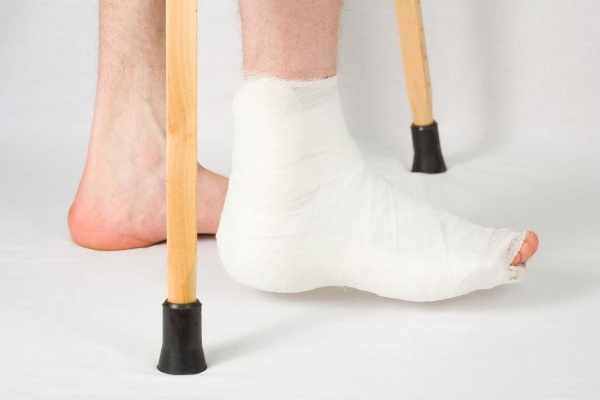Dysplasia of the knee - a congenital abnormality, or the formation of structures forming this joint.
GENERAL
 Dysplasia of bone and / or joints called the absence or abnormal development of bone tissue, as well as a violation of formation of tissue components, which are included in its composition (e.g., intra-articular cartilage, joint capsule, ligaments etc.). Such diseases are congenital in nature and are almost always systemic.
Dysplasia of bone and / or joints called the absence or abnormal development of bone tissue, as well as a violation of formation of tissue components, which are included in its composition (e.g., intra-articular cartilage, joint capsule, ligaments etc.). Such diseases are congenital in nature and are almost always systemic.
The defeat of the knee occurs in many congenital diseases and syndromes. Most of them are manifest in early childhood, and specific symptoms of dysplastic lesions of the knee joint is not leading.
In the practice of medicine for congenital dysplasia of the knee usually means an isolated subluxation and dislocation of the patella (kneecap), non-traumatic origin. This pathology is often accompanied by deformation of the lower limbs and significantly reduces the quality of life of the patient.
The frequency of congenital dislocation of the patella - about 1% of all congenital abnormalities of the musculoskeletal system. More common in boys. Hemilesion occurs five times more frequently than bilateral.
The main cause of congenital dislocation of the patella is the lack of internal rotation of the hip during the prenatal period. Thus develop various transformation, which occurs due to underdevelopment and lag of posteriorly the lateral condyle of the femur, lateroposition quadriceps and X-shaped deformity of the knee joints. All this leads to the spontaneous displacement of the patella outwards - dislocation.
CAUSES
Valid reasons for the development of dysplasia knee still remain unclear. Enormous role played by family history and the influence of damaging factors in utero.
Risk factors for dysplasia:

- The presence of dysplastic processes of any location in the mother and blood relatives.
- A viral or infectious disease during pregnancy.
- Poor maternal nutrition, which leads to shortfall to the fetus vital nutrients, vitamins and trace elements.
- Bad habits during pregnancy.
- Pathological pregnancy - oligohydramnios, toxemia, malposition, the presence of the uterus deformation (myoma, amniotic bands, etc...).
SYMPTOMS
 In early childhood dysplasia often asymptomatic.
In early childhood dysplasia often asymptomatic.
Since the beginning of walking in children manifestations of dysplasia of the knee joint become quite pronounced. Marked lameness, the instability of posture with frequent falls, uncertainty walk. Loss of balance occurs when squatting. heard the characteristic "click" when the movements of the knee.
Develops knee flexion contracture of a step length constraint, rotation outwards drumsticks, knee valgus deformity and hindfoot.
With the growth in adolescents symptoms knee dysplasia progresses. The child and the adult, this pathology, in addition to the deformation of the lower limbs, accompanied by quite severe pain. In this age period is usually marked resistant patellar dislocation offset upwards and outwards.
DIAGNOSTICS
The diagnosis is already a result of the clinical examination. Reveals limitation of movement in the knee, the small size of the patella, pathological his mobility. Patella in flexion leg moves in the upper-lateral direction, and in extension - is back on the front surface of the joint, or remains in the same place.
In adults, the knee joint dysplasia is often characterized by limitation of full extension of the knee or, on the contrary, pathological mobility in it. Patellar dislocation in most cases is nevpravimym.
To confirm the diagnosis, the ultrasound, x-ray, CT and MRI.
TREATMENT
For the treatment of knee joint dysplasia using conservative and surgical methods.
Conservative treatment is usually ineffective and applied only in mild dysplasia without obvious clinical symptoms. For this purpose, wearing knee pads (orthosis), physical exercises, massage, swimming, and so on. D.
In all other cases, the primary treatment is surgical. There are many methods of surgical intervention in this pathology. The purpose of the operation - the mobilization of the quadriceps with the patella and bring it to the center line with a stable fixation.
In some cases, use of the knee joint arthroplasty.
COMPLICATIONS AND FORECAST
Despite a relatively slow and gradual over, we can confidently assert that the knee dysplasia joint - it is a disease in which quickly develops a deformation of the joint and the lower limbs. A prolonged disruption of the normal matching of anatomical structures leads to the development of deforming arthrosis of the knee and femoral-suprapatellaris joint.
Therefore, the earlier revealed dysplasia and treatment is started the better prognosis.
Found a bug? Select it and press Ctrl + Enter



